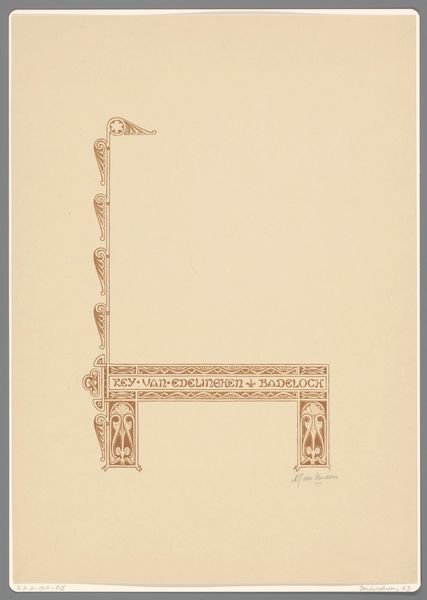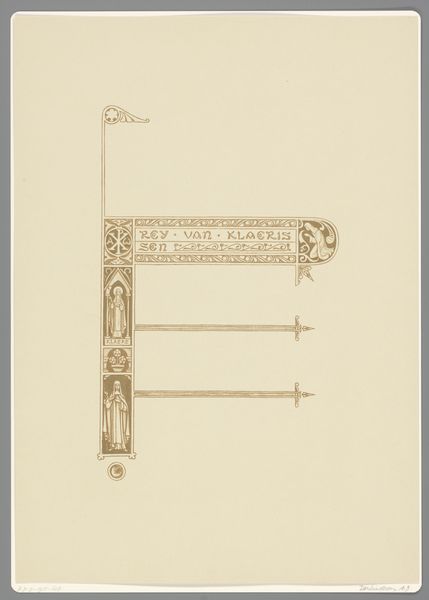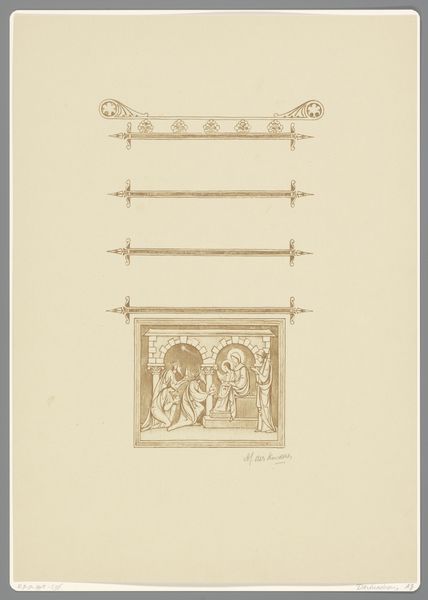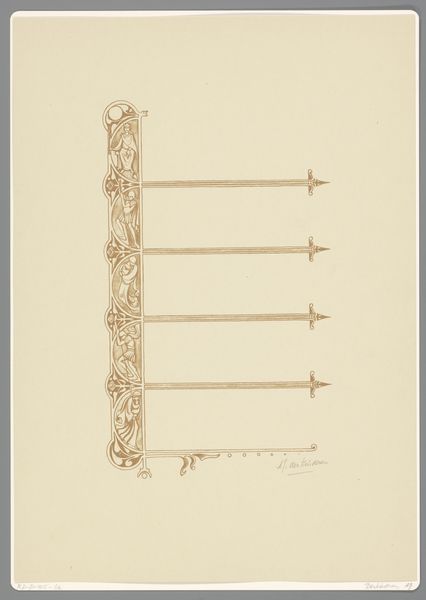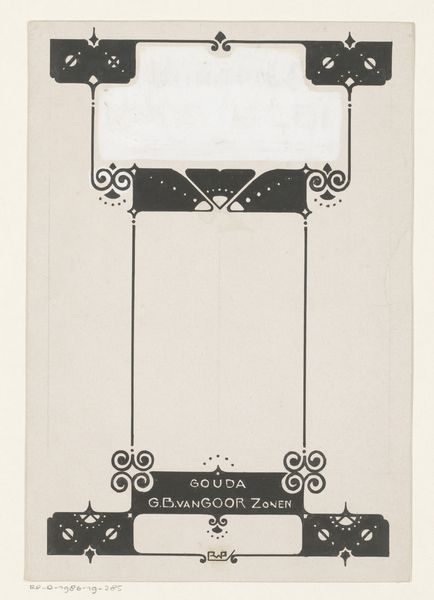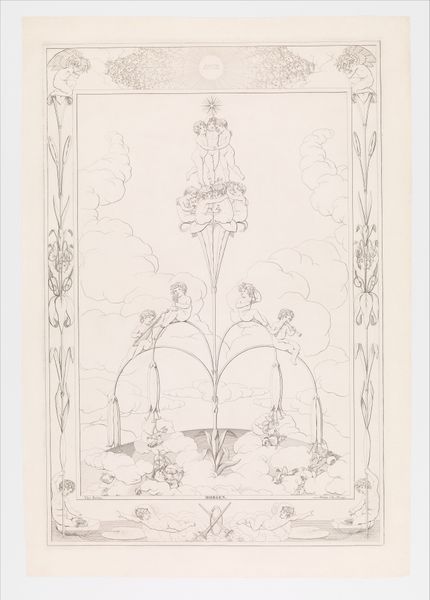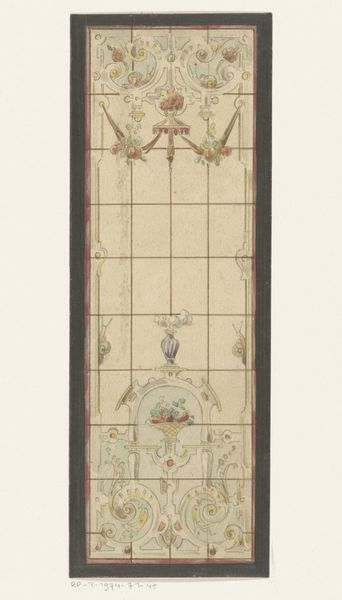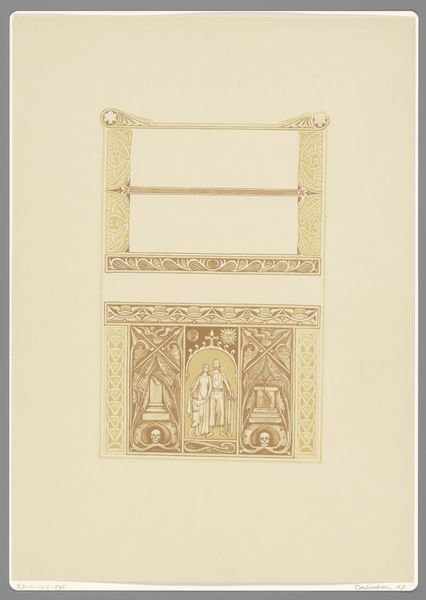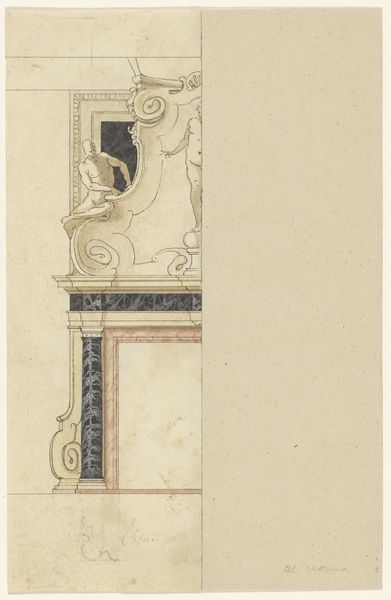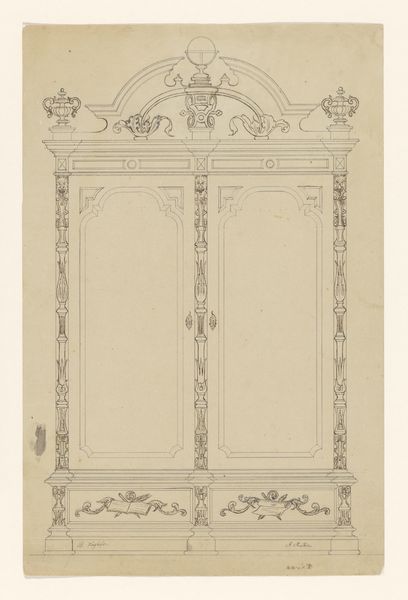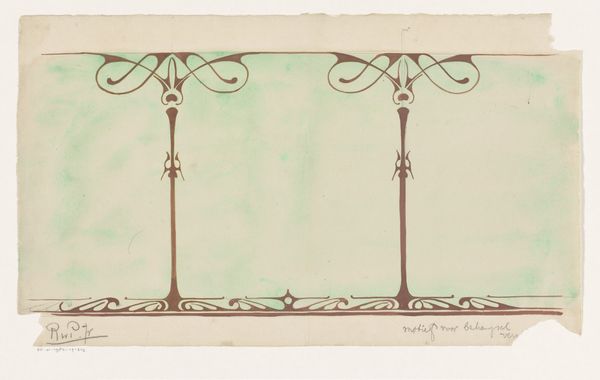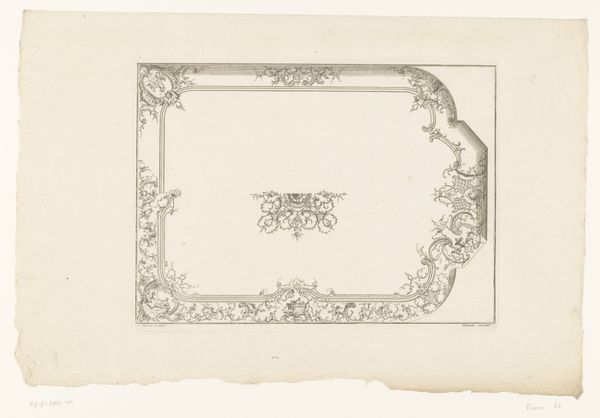
drawing, paper, ink
#
drawing
#
art-nouveau
#
old engraving style
#
paper
#
ink
#
symbolism
#
watercolour illustration
#
decorative-art
Dimensions: height 414 mm, width 295 mm
Copyright: Rijks Museum: Open Domain
Editor: Here we have Antoon Derkinderen's "Vijf wapenschilden," created between 1894 and 1901, rendered in ink and paper. It reminds me of something you'd see decorating the borders of a medieval manuscript, although the Art Nouveau style adds a lightness. What significance do these shields hold, and how would they function within their historical context? Curator: That's a keen observation about the blend of medievalism and Art Nouveau! The late 19th century saw a resurgence of interest in heraldry and medieval aesthetics, often tied to nationalistic sentiments. These shields, while decorative, connect to larger socio-political narratives. Consider that Art Nouveau itself was a reaction against industrialization, a longing for handcrafted beauty often referencing a romanticized past. How do you think the artist’s choice to render them as a drawing rather than, say, in stained glass or tapestry, impacts our interpretation? Editor: Perhaps the drawing medium, on paper, lends itself to broader circulation. Making these symbols of power and heritage available to a wider audience, rather than just those within a castle or church? Curator: Precisely! This speaks to the democratization of imagery. By reproducing these heraldic symbols in a relatively accessible form, Derkinderen potentially engages with the public role of art in shaping collective memory and identity. Consider who might have purchased or viewed this work at the time. How would its meaning shift depending on whether it adorned the home of a wealthy merchant, a politician, or an art collector? Editor: I see what you mean. It makes me rethink the function of art—not just as an aesthetic object but also as a form of cultural commentary. Curator: Indeed! By understanding the socio-political context surrounding this piece, we can appreciate how art actively participates in constructing and negotiating historical narratives. I have new perspective myself.
Comments
No comments
Be the first to comment and join the conversation on the ultimate creative platform.
